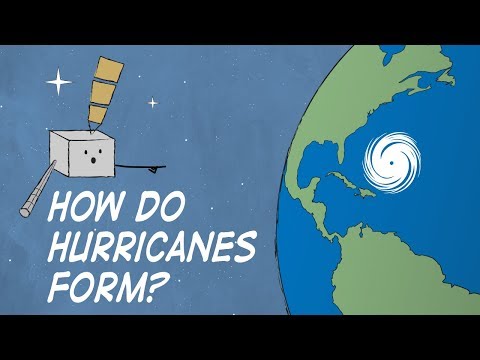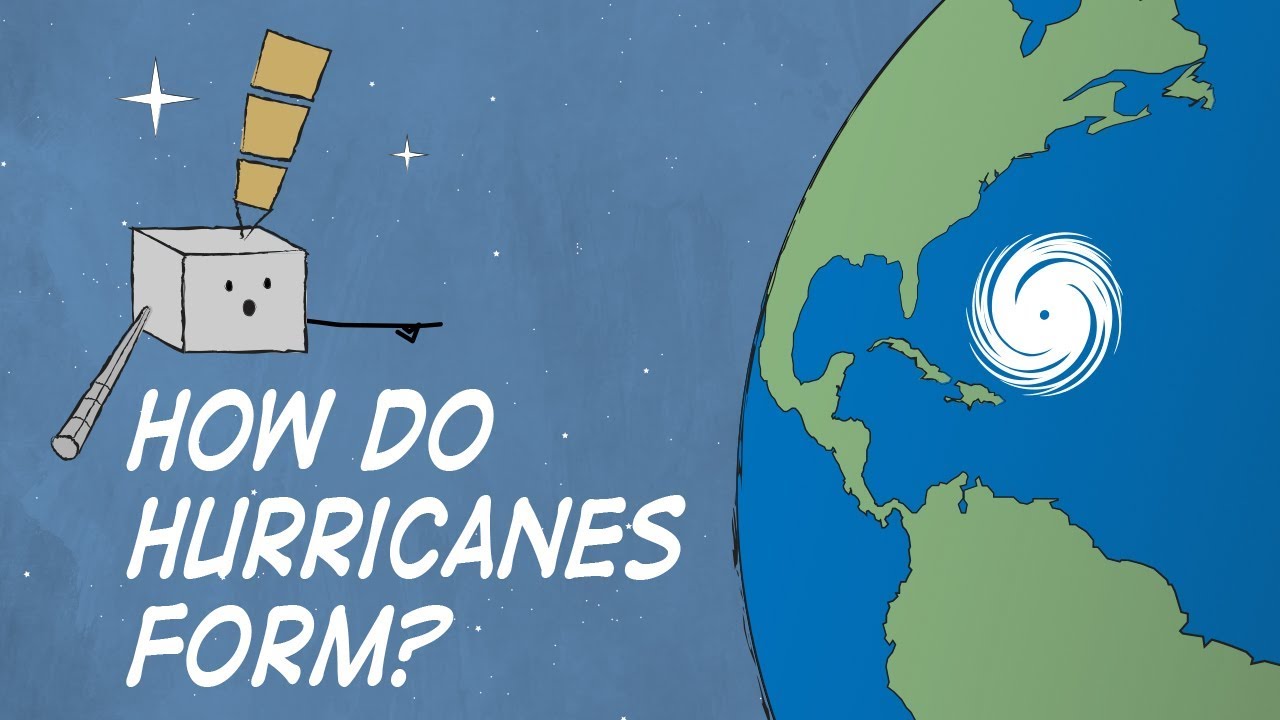What causes hurricanes? Hurricanes are powerful and destructive natural phenomena that have captivated the curiosity of scientists and the general public alike. Understanding the factors that contribute to the formation and intensification of these colossal storms can be both fascinating and eye-opening. The warm ocean waters serve as the fuel for hurricanes, providing the necessary energy to power these atmospheric giants. As air rises from the ocean’s surface, it cools and condenses, forming towering thunderstorms. The Coriolis effect, a result of the Earth’s rotation, then causes these storms to spin and form a distinct circular shape. But it doesn’t stop there – moisture and instability in the atmosphere further enhance the storm’s development, creating a swirling vortex of wind and rain. As hurricanes progress, they can unleash torrential downpours, strong winds, and storm surges, wreaking havoc on coastal areas. These incredible natural events are not only a testament to the power of nature but also a reminder of the delicate balance of our planet’s systems. By delving into the intricate mechanisms that contribute to hurricane formation, we gain a deeper appreciation for the interconnectedness of our environment and the profound impact that climate and ocean conditions have on shaping these awe-inspiring phenomena.

Factors Contributing to Hurricane Formation
| Factor | Description |
|---|---|
| Warm Ocean Water | Hurricanes thrive on warm water with temperatures above 80°F (27°C). This provides the necessary energy for their development and intensification. |
| Low Vertical Wind Shear | Vertical wind shear, defined as the change in wind speed and direction with height, should be relatively low for a hurricane to form. This allows the storm system to maintain its structure and strengthen effectively. |
| Moist Atmosphere | A moist atmosphere is crucial for hurricane formation. High humidity levels provide ample moisture, which condenses to form clouds and releases latent heat, fueling the hurricane’s energy. |
| Coriolis Effect | The Coriolis effect, caused by the Earth’s rotation, plays a vital role in the formation of hurricanes. It induces the rotation needed for a tropical cyclone to develop, giving it its characteristic spiral shape. |
| Pre-existing Disturbance | Hurricanes often originate from pre-existing disturbances, such as tropical waves or clusters of thunderstorms. These disturbances serve as a starting point for the storm’s development, providing a focus for further organization. |
| Weak Upper-Level Winds | For a hurricane to strengthen, it requires weak upper-level winds. Strong winds at higher altitudes can disrupt the storm’s circulation, hindering its growth and potentially tearing it apart. |
Unleashing Nature’s Fury: The Birth of Hurricanes
What Causes a Hurricane?
A hurricane is a powerful and destructive natural disaster that can cause massive damage to coastal areas. Understanding the causes of hurricanes is crucial for predicting and preparing for these violent storms. In this article, we will explore the main factors that contribute to the formation and intensification of hurricanes.
1. Warm Ocean Waters
Warm ocean waters play a vital role in the development of hurricanes. The warm surface waters, typically above 80 degrees Fahrenheit (26.5 degrees Celsius), provide the necessary heat and moisture for a hurricane to form and strengthen. As the ocean water evaporates, it rises and condenses, forming towering thunderstorm clouds. This condensation releases latent heat, further fueling the hurricane’s energy.
Additionally, the Coriolis effect – a phenomenon caused by the Earth’s rotation – helps to initiate the spinning motion of a hurricane. As warm air rises from the ocean surface, it creates an area of low pressure. The Coriolis effect causes the air to rotate counterclockwise in the Northern Hemisphere and clockwise in the Southern Hemisphere, resulting in the formation of a hurricane.
2. Low Vertical Wind Shear
Another crucial factor in the formation of hurricanes is low vertical wind shear. Wind shear refers to the change in wind speed or direction with height. When wind shear is low, it allows the storm to maintain its vertical integrity and grow stronger.
Vertical wind shear can disrupt the updrafts and outflow of a developing hurricane, preventing it from organizing and intensifying. However, when wind shear is minimal, the storm can maintain its structure, allowing the warm air to rise and condense, releasing heat and further fueling the hurricane.
3. Moisture and Instability
Moisture and atmospheric instability are essential ingredients for hurricane development. In addition to warm ocean waters, a hurricane requires a moist atmosphere to sustain its strength. Moisture-rich air provides the necessary fuel for the storm, as water vapor condenses into liquid droplets, releasing heat energy.
Furthermore, atmospheric instability is crucial for the formation of thunderstorms within a hurricane. Instability occurs when warm air near the ocean surface rapidly rises, while colder air aloft sinks. This vertical instability creates an environment conducive to thunderstorm development, which is essential for the formation and maintenance of a hurricane.
4. Climate Patterns
Long-term climate patterns can significantly influence the frequency and intensity of hurricanes. For instance, the El Niño-Southern Oscillation (ENSO) cycle in the Pacific Ocean can impact hurricane activity in the Atlantic. During El Niño years, wind shear increases in the Atlantic, making it less favorable for hurricane formation. Conversely, La Niña conditions tend to reduce wind shear, leading to more favorable conditions for hurricanes.
Similarly, the Atlantic Multidecadal Oscillation (AMO) is a longer-term climate pattern that affects hurricane activity. The AMO typically lasts for 25 to 40 years and alternates between warm and cool phases. During the warm phase, which began in the mid-1990s, there is an increased likelihood of more frequent and intense hurricanes in the Atlantic basin.
5. Global Warming
Global warming is a topic of great concern when discussing the causes of hurricanes. While it is challenging to attribute individual storms to climate change, scientists believe that rising sea temperatures due to global warming can contribute to the intensity of hurricanes.
As the planet warms, the ocean temperatures increase, providing more energy for hurricanes to form and intensify. Additionally, global warming can lead to sea-level rise, which can exacerbate storm surge flooding associated with hurricanes.
It is important to note that hurricanes are complex phenomena influenced by various factors. Scientists continue to study and improve hurricane prediction models to better understand the causes and behavior of these powerful storms. By understanding the factors that contribute to hurricane formation, we can enhance our preparedness and response to these natural disasters.

